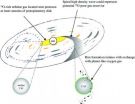(Press-News.org) Low physical activity increases kidney transplant patients' likelihood of dying early, according to a study appearing in an upcoming issue of the Clinical Journal of the American Society Nephrology (CJASN). The results suggest that patients need to exercise to fend off an early death.
Inactive people in general face increased risks of developing cardiovascular disease and of dying prematurely. Individuals with chronic kidney disease—particularly those on dialysis—tend to get little exercise, but most increase their activity levels modestly after receiving a kidney transplant. Until now, no one has examined whether low physical activity levels in kidney transplant recipients is associated with an increased risk of dying prematurely from heart-related or other causes. Maintaining heart health is particularly important for these individuals, as kidney transplant recipients have a 4- to 6-fold increased risk of dying from cardiovascular causes than individuals in the general population.
Dorien Zelle (University Medical Center Groningen, in the Netherlands) and her colleagues studied the health of 540 kidney transplant recipients between 2001 and 2003, assessing physical activity through questionnaires and recording deaths until August 2007. With regard to the guidelines for minimum requirements of physical activity, 260 (48%) patients did not meet the criteria and 79 (14.6%) were completely inactive.
During the study period, 81 patients died, with 37 heart-related deaths; the lower the level of physical activity, the higher the rate of deaths. Specifically, cardiovascular deaths occurred in 11.7%, 7.2%, and 1.7% of patients considered inactive, moderately active, and active, respectively. Deaths from any cause occurred at rates of 24.4%, 15.0%, and 5.6% in these respective groups.
The investigators acknowledged that in general, sicker people are less likely to exercise and more likely to die; however, they found that the link between low physical activity and premature death was not substantially affected by adjustments for factors such as patients' heart health, kidney function, muscle mass, and their diabetes and smoking status.
Dr. Zelle noted that to determine whether increased physical activity levels may improve the health and prolong the lives of transplant recipients, the University Medical Center Groningen, in collaboration with the University Medical Center Maastricht, will start a randomized controlled lifestyle intervention study. Kidney transplant recipients will undergo a supervised exercise program and receive individual counseling to promote physical activity and a healthy diet.
###
Study co-authors include Eva Corpeleijn, PhD, Ronald Stolk, MD, Mathieu de Greef, PhD, Reinold Gans, MD, Gerjan Navis, MD, and Stephan Bakker MD, PhD (University Medical Center Groningen, in the Netherlands).
Disclosures: This research was performed within the framework of the Centre for Translational Molecular Medicine, project PREDICCt (Prediction and Early Diagnosis of Diabetes and Diabetes-related Cardiovascular Complications, grant 01C-104), and supported by the Netherlands Heart Foundation, Dutch Diabetes Research Foundation, and Dutch Kidney Foundation.
The article, entitled "Low Physical Activity Is Associated with Increased Risk for Cardiovascular and All-Cause Mortality in Renal Transplant Recipients," will appear online at http://cjasn.asnjournals.org/ on March 3, 2011, doi 10.2215/CJN.03340410.
The content of this article does not reflect the views or opinions of The American Society of Nephrology (ASN). Responsibility for the information and views expressed therein lies entirely with the author(s). ASN does not offer medical advice. All content in ASN publications is for informational purposes only, and is not intended to cover all possible uses, directions, precautions, drug interactions, or adverse effects. This content should not be used during a medical emergency or for the diagnosis or treatment of any medical condition. Please consult your doctor or other qualified health care provider if you have any questions about a medical condition, or before taking any drug, changing your diet or commencing or discontinuing any course of treatment. Do not ignore or delay obtaining professional medical advice because of information accessed through ASN. Call 911 or your doctor for all medical emergencies.
Founded in 1966, and with more than 12,000 members, the American Society of Nephrology (ASN) leads the fight against kidney disease by educating health professionals, sharing new knowledge, advancing research, and advocating the highest quality care for patients.
END
Evidence for a diversified sea-based economy among North American inhabitants dating from 12,200 to 11,400 years ago is emerging from three sites on California's Channel Islands.
Reporting in the March 4 issue of Science, a 15-member team led by University of Oregon and Smithsonian Institution scholars describes the discovery of scores of stemmed projectile points and crescents dating to that time period. The artifacts are associated with the remains of shellfish, seals, geese, cormorants and fish.
Funded primarily by grants from the National Science Foundation, the ...
Old Westbury, New York (Mar. 3, 2011) – Fossil records verify a long-standing theory that horses evolved through natural selection, according to groundbreaking research by two anatomy professors at New York College of Osteopathic Medicine (NYCOM) of New York Institute of Technology.
Working with colleagues from Massachusetts and Spain, Matthew Mihlbachler, Ph.D., and Nikos Solounias, Ph.D. arrived at the conclusion after examining the teeth of 6,500 fossil horses representing 222 different populations of more than 70 extinct horse species. The records, spanning the past ...
Optics researchers from the Universities of Glasgow and Bristol have developed an iPad application for accurate, easy and intuitive use of optical tweezers.
Optical tweezers, used to manipulate tiny particles through the use of highly focused laser beams, are the tool at the heart of much molecular biology – helping us to experiment with and better understand the microscopic processes of organisms.
Research published today, Friday 4 March 2011, in IOP Publishing's Journal of Optics, shows how a team of researchers has overcome the limitations of computer mouse and ...
Johns Hopkins scientists have discovered that PARIS — the protein — facilitates the most common form of Parkinson's disease (PD), which affects about 1 million older Americans. The findings of their study, published March 4 in Cell, could lead to important new targets for treatment.
Previous research has shown that a protein dubbed parkin protects brain cells by "tagging" certain toxic elements for natural destruction. Mutations in the parkin gene cause rare forms of PD that run in families, but its role remained unclear in sporadic late-onset PD, the prevalence of which ...
Star-shaped cells in our brains called astrocytes were once considered little more than structures to fill the gaps between all-important neurons. But more recent evidence has emerged to reveal that those astrocytes play more than a supporting role; they are involved in information processing and signal transmission and they help to regulate the shapes of our neurons and their connections to one another.
Now, researchers reporting in the March 4th Cell, a Cell Press publication, have found that astrocytes are also essential for making long-term memories. When they don't ...
Scientists have performed a micro-probe analysis of the core and outer layers of a pea-sized piece of a meteorite some 4.57 billion years old to reconstruct the history of its formation, providing the first evidence that dust particles like this one experienced wildly varying environments during the planet-forming years of our solar system.
The researchers interpret these findings as evidence that dust grains traveled over large distances as the swirling protoplanetary nebula condensed into planets. The single dust grain they studied appears to have formed in the hot ...
If you tend to have trouble picking up the latest dance moves or learning to play a new piano piece, there might be an explanation. A new study published online on March 3rd in Current Biology, a Cell Press publication, shows that people who are fast to learn a simple sequence of finger motions are also those whose brains show large changes in a particular chemical messenger following electrical stimulation.
That chemical messenger, known as GABA, is important for the plasticity of the motor cortex, a brain region involved in planning, control, and execution of voluntary ...
A new study finds that a brain rhythm considered the hallmark of wakefulness not only persists inconspicuously during sleep but also signifies an individual's vulnerability to disturbance by the outside world. In their report in the March 3 PLoS One, the team from the Massachusetts General Hospital (MGH) Division of Sleep Medicine uses computerized EEG signal processing to detect subtle fluctuations in the alpha rhythm during sleep and shows that greater alpha intensity is associated with increased sleep fragility. The findings could lead to more precise approaches to ...
There have been no shortages of horrific natural disasters splashing across headlines in the last year: the devastating earthquakes in Haiti and Chile; the Tsunami in the Philippines; and the volcano eruption in Indonesia--to name just a few. The poly tarps have come to the rescue over and over again in these situations, providing a cheap yet durable material with which to construct a roof or otherwise assist in the process of recovering and rebuilding from natural disaster born tragedy.
In the event of a natural disaster, as people are forced out of their homes or lose ...
How do organs "know" when to stop growing? The answer could be useful in regenerative medicine, and also in cancer – where these "stop growing" signals either aren't issued or aren't heeded. Researchers in the Stem Cell Program at Children's Hospital Boston have now found a regulator of gene activity that tells epidermal stem cells when it's time to grow more skin, as well as a "crowd control" molecule that can sense cell crowding and turn the growth off.
The work, in mice and in human cancer cells, provides clues to new therapeutic strategies for cancer, particularly ...


